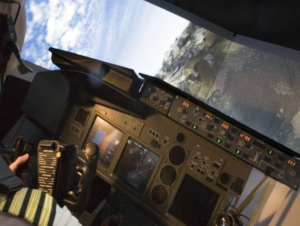
Loss of Control due to a lowered state of awareness and energy caused by lack of external visual references is a major aviation safety issue. In August 2010, the Commercial Aviation safety Team (CAST) chartered the Airplane State Awareness (ASA) Joint Safety Analysis Team (JSAT). The ASA JSAT analyzed a subset of loss of control in-flight incidents and found that half of all these incidents involved loss of attitude(spatial disorientation and or loss-of-energy state awareness. In order to mitigate the problems and contributing factors that lead to flight crew loss of airplane state awareness. The CSAOB is developing data systems, models, training methods, and technologies for transition to the aviation community which can reduce the flight crew’s loss of airplane state awareness as a causal factor in commercial aviation accidents and incidents.
The branch has developed and is evaluating Cast Safety Enhancement 200 Virtual Day-VMC display. This system will support attitude recognition, attitude alerting and awareness, and visual dominance to prevent spatial disorientation. The display will be presented full time in the primary field-of-view, presented to both flight crew members, and includes energy clues such as flight, acceleration, and speed deviation, in a manner similar to modern heap-up displays.
The scope of our research involves many questions. what are the minimum requirements of SVS to improve pilot situation awareness to prevent entry to unusual attitude and/or recovery from unusual attitudes? To What degree does FOV improve pilot situation awareness to prevent entry to unusual attitudes and/or recovery from unusual attitudes? Our tests include human in the loop simulations with airline pilots. Our work goes towards defining minimum avionics system performance standards. Effectiveness will be assured by monitoring the Flight Operational Quality Assurance(FOQA). We would like an implementation of display concept requirements into new transport category airplane (TCA) programs starting in 2020.
By 2035 we want to equip 30% of worldwide aircraft fleet with Virtual day-VMC displays to improve attitude awareness, recognition, and visual dominance in order to reduce risk loss of control in-flight incidents by 16%.
Tech POC: Kyle Ellis